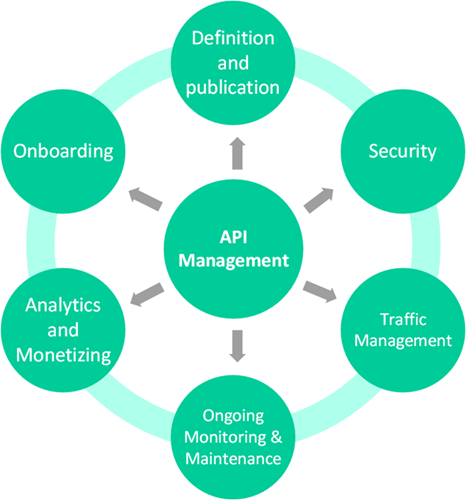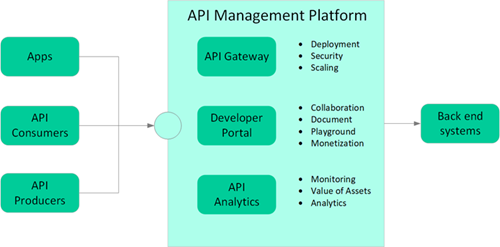Almost all modern applications are built on APIs. APIs are built on one key principle, which is to reuse services and not just to reuse business capabilities without duplicating the functionality to reduce development costs.
In the previous article, we discussed the API economy, and how it can help businesses gain a competitive advantage. Now, we will look at some of the API programme challenges and how they can be managed.
Common Challenges
APIs are inherently hard to develop and release, and invariably come with a cost. Similar to other software applications, APIs have their lifecycles, which centre on the following phases,
- Designing and planning APIs
- Developing APIs
- Testing APIs
- Securing APIs
- Documenting APIs
- Versioning APIs
- Deploying or publishing APIs
- Making APIs discoverable
- Monetising APIs
- Observing and managing APIs
- Scaling APIs Retiring (sunsetting) APIs
Each stage is important to one another in creating and maintaining a healthy API.
Customer Experience
APIs should enable the rapid adoption of new applications and seamless experiences across different channels. This helps customers (in this case, app developers and partners).
Most importantly, APIs should provide high levels of responsiveness and convenience to customers, and this is one of the key challenges that must be addressed.
Scope
A major challenge in the operation of a healthy API management programme is to achieve the appropriate level of central control. As the programme matures, businesses need to consider how they are going to centralise all of the controls while the API becomes more complex.
Scalability
As the API landscape becomes more complex, businesses might encounter a lot of issues with the increase in the number of teams involved and the number of APIs created by those teams, which can become a challenge for management and maintenance.
The operational processes will also change as the programme matures. Tools for tracking a small set of APIs created by the same team in one physical location is a very different proposition compared to the tools required for tracking hundreds or thousands of API entry points across multiple time zones and countries. Mostly, scaling will be a challenge in these areas in terms of teams, governance and technology.
A healthy API management solution can solve scalability challenges by providing ease of access and reducing the technical load across the API lifecycle.
Security
Security is another challenge when an organisation opens their digital assets to the outside world where almost anyone can access potentially sensitive information. Security is a critical element, and all sorts of measures must be taken to protect sensitive data, such as ensuring that permissions are properly managed on every resource. Without a healthy API management solution that provides visibility and consistency, security monitoring becomes extremely difficult at an enterprise level.
What is API Management?
API management is a process to design, document, distribute, control, monitor and analyse APIs that connect applications, business processes and data. It is about centralising control of API programmes throughout their life cycle. API management allows organisations to create both public and private APIs, monitor their activities and ensure API customer experiences are being met in line with service level agreements.
The key benefit of using an API management tool is to solve all major challenges of an API programme, such as central control, scale, security, etc.

API Management Platforms
An API management platform is a tool that provides the seamless and end-to-end implementation of the API management process. It benefits organisations to centralise control of their API integrations while ensuring that they consistently meet high performance and security standards.
Today, there are lots of API management platforms in the market. The following Gartner quadrant list is a good place to find out the market leaders and other rising stars in the market.

An API management platform must have the following features:
Developer Portal
A developer portal provides the API catalogue, documentation and software to test API functionality.
It is a common API management practice to have a developer portal and it is an integral part of simplified collaboration across teams that enables developers to easily navigate, build and test their APIs.
An API Gateway
The API gateway is an API proxy that resides between the API provider and the API consumer. This acts as a front door for all back end systems and represents a complex subsystem. It can handle request routing, authentication and authorisation, other security practices, rate limiting, API transformation, scaling and monitoring.
The API gateway decides how clients can communicate with APIs through policies and also performs the above functionalities through these policies.
API Life Cycle Management
As part of new digital transformation strategies, API integrations enable the scaling up of the business operations. It is the most essential feature of the API management platform and it helps organisations to manage the API's life cycle from design to deployment and scaling.

Some of the API management platforms provide the following additional features to enhance the overall API management solutions:
Analytics
Business owners, application developers and administrators should understand API performance and this feature provides insights for business owners, operational administrators and application developers, enabling them to manage all aspects of a company’s APIs and API programmes. Most importantly, it helps organisations to understand the value of their business assets.
API Monetisation
This feature enables API providers to create their business models for their API business. It helps API providers to package, price and to publish their APIs so that partners and developers can purchase access or take part in revenue sharing.
Use Cases
An API management platform is an essential element for an organisation and it is the key enabler of digital strategies. There are a few use cases where API management platforms empower the enterprise to use their business assets and sustain their success in the API economy. These are:
When an organisation wants to support their digital transformation. For example, when an organisation has a strategy to integrate multiple internal or external APIs to create a new business or expose the internal APIs to their consumers (data or business as a service). Managing the whole process is cumbersome and ineffective without the right automation tools. An organisation can accelerate their API business by using the right API management platforms.
B2B integration. When an organisation wants to integrate with its partner to build new business, the API management platforms provide the necessary process, tools and standards to enable seamless integration with one or more parties.
Seamless security. It is equally important to apply security on digital assets as to how they are accessed by consumers. The API management platform acts as a front door and applies all possible securities to all digital assets.
Compliance and regulations. When there is a demand to apply compliance and regulations (such as GDPR) on multiple APIs or applications that are consuming APIs accessing/moving a huge volume of data, the API management platform will help organisations centralise compliance and regulation in one place.
Accelerating app development. The API management platform enables developers to improve the application development productivity, whereby developers can leverage the organisation’s data and business functionality.
Maximise the business value. One common issue across the business is a lack of understanding towards the growth of a business’s assets' value or how it can be optimised. This can be a blind spot in most organisations as they stick to one business model that may be inefficient for them and their customers. The API management platform can help organisations to understand their business assets' value and optimise it through Analytics to create the right business model for their customers.
Conclusion
All enterprises want a sustainable business in the API economy and will come across some common and unique challenges during their API programme journeys. It is very important to create and maintain a healthy API management solution and API management platforms help an organisation to achieve this.
Author: Sreenivasan Madhaiyan.